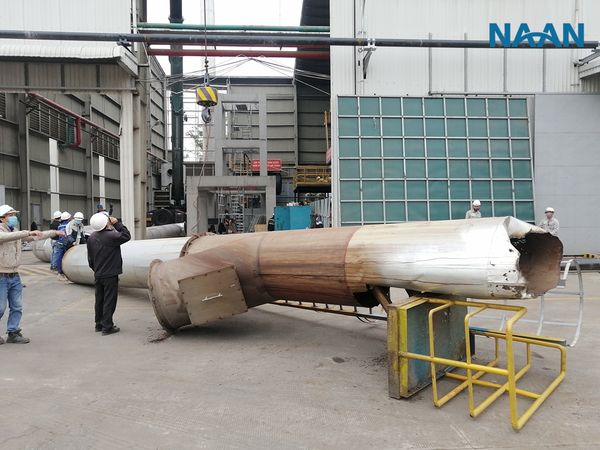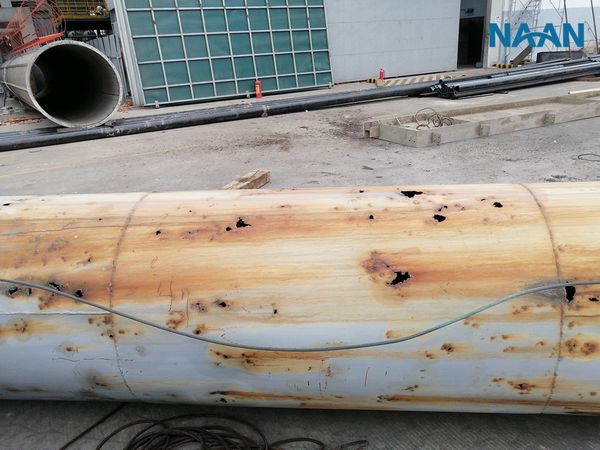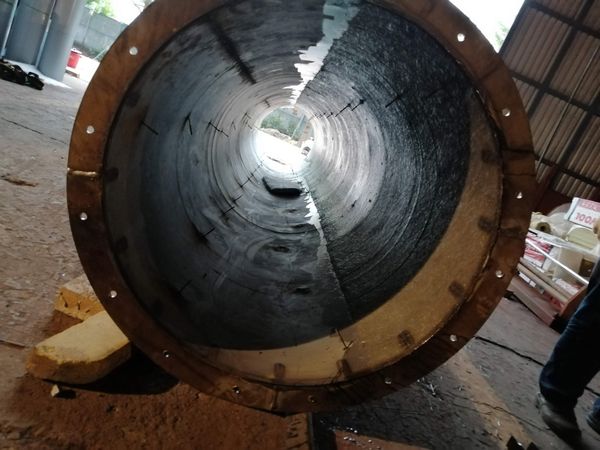Rotten boiler chimney: Causes and treatment options

The boiler chimney rots after a short period of use
The boiler chimney is an important part of the industrial boiler system, playing an important role. important in the process of releasing smoke and emissions from fuel combustion. However, the problem of rotting chimneys is a challenge for boiler manufacturers and operators. In this article, we will learn about the causes of this condition as well as treatment options to effectively solve the problem.
Causes of chimney rot
One of the main causes of rot in boiler chimneys is the presence of pollutants in the flue gas. Substances such as SO2, CO2, CO and NOx often come from the process of burning fuel in a boiler. When the temperature of the exhaust smoke drops to a certain level, these substances easily condense and form strong acids, causing corrosion to the material of the chimney.
In addition, the operation Boiler operation at low flue gas temperatures can also contribute to chimney rot. Energy savers are often installed behind the boiler to save temperature, but sometimes cause increased condensation and corrosion of the chimney.

Most The chimney is destroyed from the inside, it is not easy to detect from the outside
In addition, the height of the chimney is also an important factor. Industrial chimneys are often required to have a height of no less than a certain threshold, usually about 18m. This is to ensure that exhaust fumes are released into the environment effectively and without affecting the surrounding environment. However, the higher you go, the air becomes colder, cooling the chimney shell and easily causing condensation, causing corrosion to the chimney material.
Option treatment
To overcome the rot of the boiler chimney, there are several options that can be applied:
1. Use corrosion-resistant materials: Using materials such as stainless steel for chimneys can help increase the durability and corrosion resistance of the chimney. Stainless steel is a type of stainless steel with high corrosion resistance, a popular choice for applications requiring high durability and corrosion resistance such as in the chemical industry and boiler industry.
2. Protect the inside of the chimney: Applying a protective layer such as composite inside the chimney can help protect the material and strengthen the structure of the chimney, thereby minimizing the risk of rot caused by corrosive substances. corroded in exhaust fumes.
3. Ensure boiler operation in optimal conditions: Adjusting flue gas temperature and properly managing the operation of energy savers can help minimize the risk of chimney rot.
In all options, maintaining and periodically checking the condition of the chimney is important to detect problems early and handle them before they become serious and affect the efficiency of the chimney. performance and safety of the boiler system.

Use stainless steel material for the chimney and add a protective composite layer inside
Conclusion
Boiler chimney rot is a concern, but it is also a challenge that can be addressed through the application of effective prevention and treatment measures. fruit. Choosing the right materials, regular maintenance and intelligent operation of the boiler system are the keys to ensuring the chimney operates stably and efficiently over a long period of time.

